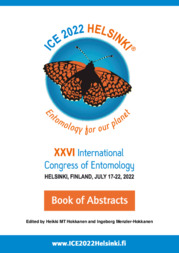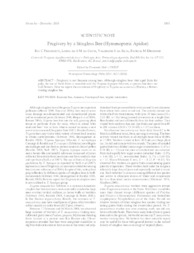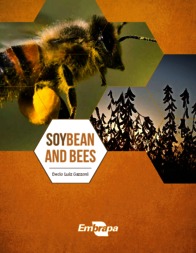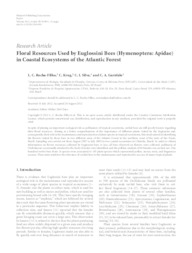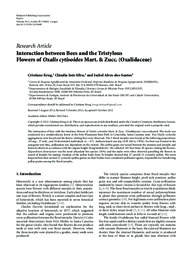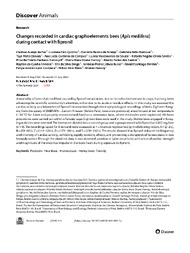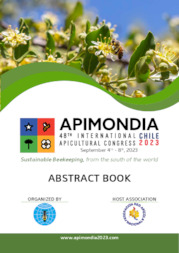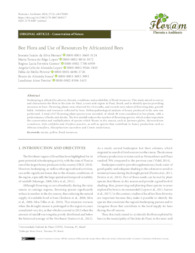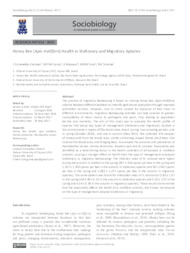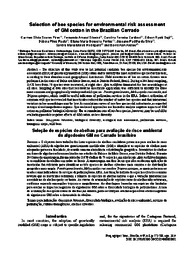Search Publications
Filter by:
| Author(s): SANTOS, I. A. dos; SILVA, C. I.; SCHLINDWEIN, C.; KRUG, C.; CORDEIRO, G. D.; OLIVEIRA, R.; MATEUS, S.; DÖTTERL, S. Most bees are active during the day. However, approximately 1% of the bee species are nocturnal and forage in search for flowers during the low light intensities of the night, between sunset and sunri... ... |
| Author(s): PERUQUETTI, R. C.; COSTA, L. da S. M. da; SILVA, V. S. da; DRUMOND, P. M. Frugivory is not frequent among bees. Although stingless bees visit aged fruits for pulp, the use of fresh fruits is recorded only for Trigona hypogea Silvestri, a species that does not visit flowers.... ... |
| |
| Author(s): ROCHA-FILHO, L. C.; KRUG, C.; SILVA, C. I.; GARÓFALO, C. A. In spite of playing an important ecological role as pollinators of tropical ecosystems, orchid bees are still poorly known regarding their floral resources. Aiming at a better comprehension of the imp... ... |
| Author(s): KRUG, C.; SILVA, C. I.; ALVES-DOS-SANTOS, I. The interaction of bees with the tristylous flowers of Oxalis cytisoides Mart. & Zucc. (Oxalidaceae) was evaluated. The study was conducted in a semideciduous forest at the Fritz Plaumann State Park i... ... |
| Author(s): PAZ, C. A. da; EIRÓ-QUIRINO, L.; ARAÚJO, D. B. de; BARBOSA, G. B.; CÂMARA, T. M.; CAMPOS, A. L. C. de; SOUZA, L. V. de; SANTOS, R. N. O.; HARTCOPFF, P. F. P.; HAMOY, M. K. O.; SANTOS, M. F. dos; FERREIRA, R. da C.; DEIGA, Y. da S.; RUSSO, A. P. L.; PEREIRA, D. S.; CONTRERA, F. A. L.; MUTO, N. A.; HAMOY, M. A mortality of bees (Apis mellifera) caused by fipronil intoxication, due to its indiscriminate use in crops, has long been attracting the scientific community’s attention, either due to its acute or... ... |
| Author(s): MAUÉS, M. M.; CAMPBELL, A. J.; SILVA E SILVA, F. D. da; LEÃO, K. L.; CARVALHEIRO, L. G.; MOREIRA, E. F.; MERTENS, F.; KONRAD, M. L.; MENEZES, C. Agricultural expansion is a major driver of habitat loss, which triggers biodiversitydecline, including wild pollinators, and affects crop production. 76% of world crops are dependenton biotic pollina... ... |
| Author(s): MORAES, J. I. da S.; LOPES, M. T. do R.; FERREIRA-GOMES, R. L.; LOPES, A. C. de A.; PEREIRA, F. de M.; SOUZA, B. de A.; PEREIRA, L. A. Beekeeping is affected by adverse climatic conditions and availability of floral resources. This study aimed to survey and characterize the flora in São João do Piauí, a semi-arid region in Piauí, Bra... ... |
| Author(s): CESTARO, L. G.; ALVES, M. L. T. M. F; MESSAGE, D.; SILVA, M. V. G. B.; TEIXEIRA, E. W. The practice of migratory beekeeping is based on moving honey bee (Apis mellifera) colonies between different locations to intensify agricultural production through improved pollination services. Howe... ... |
| Author(s): PIRES, C. S. S.; SILVEIRA, F. A.; CARDOSO, C. F.; SUJII, E. R.; PAULA, D. P.; FONTES, E. M. G.; SILVA, J. P. da; RODRIGUES, S. M. M.; ANDOW, D. A. The objective of this work was to list potential candidate bee species for environmental risk assessment (ERA) of genetically modified (GM) cotton and to identify the most suited bee species for this... ... |
Observation
Some of Embrapa's publications are published as ePub files. To read them, use or download one of the following free software options to your computer or mobile device. Android: Google Play Books; IOS: iBooks; Windows and Linux: Calibre.
Access other publications
Access the Agricultural Research Database (BDPA) to consult Embrapa's full library collection and records.
Visit Embrapa Bookstore to purchase books and other publications sold by Embrapa.

